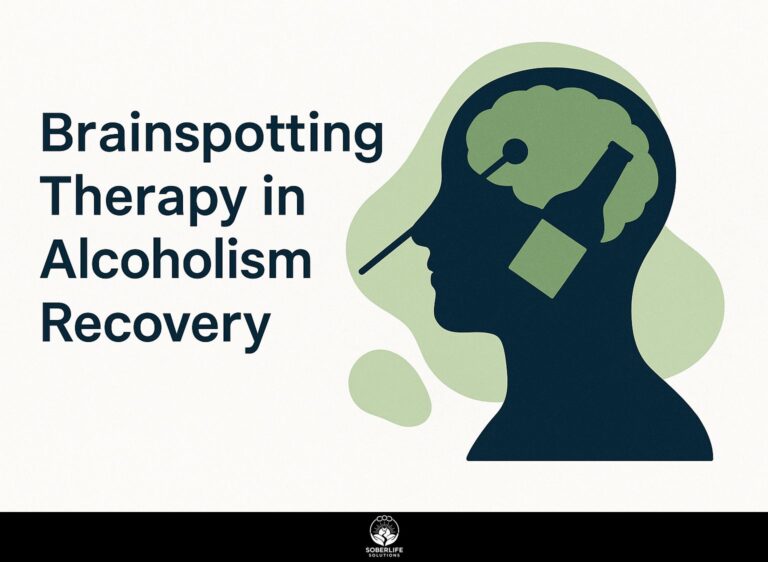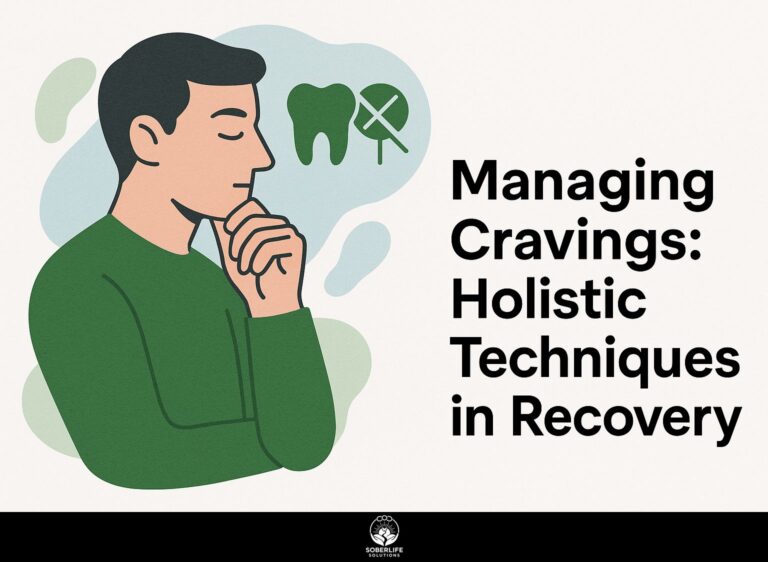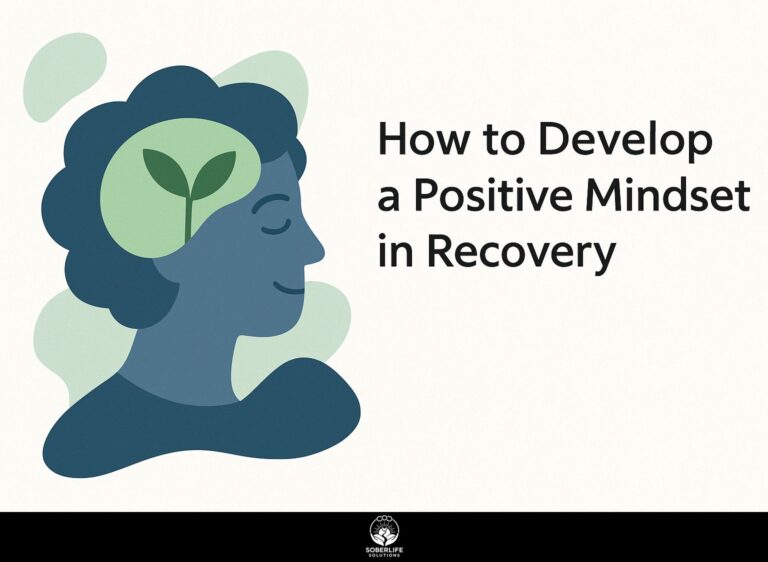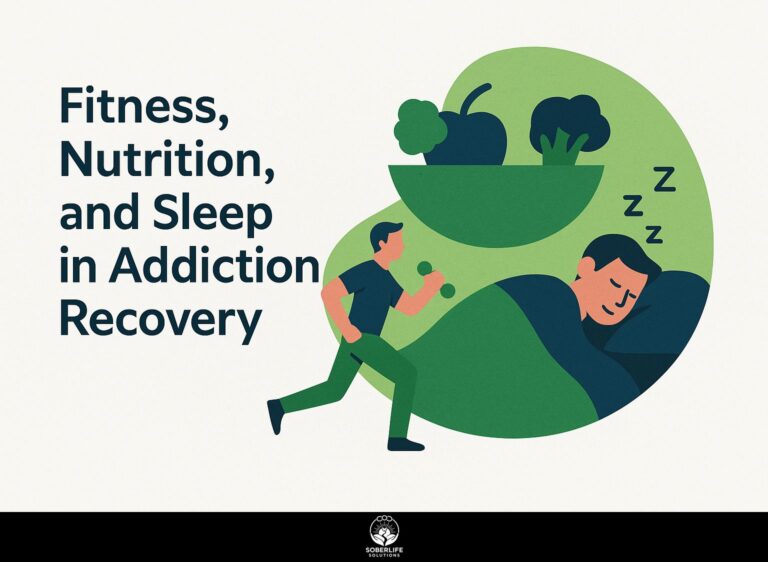Acupuncture and Acupressure in Recovery: Techniques
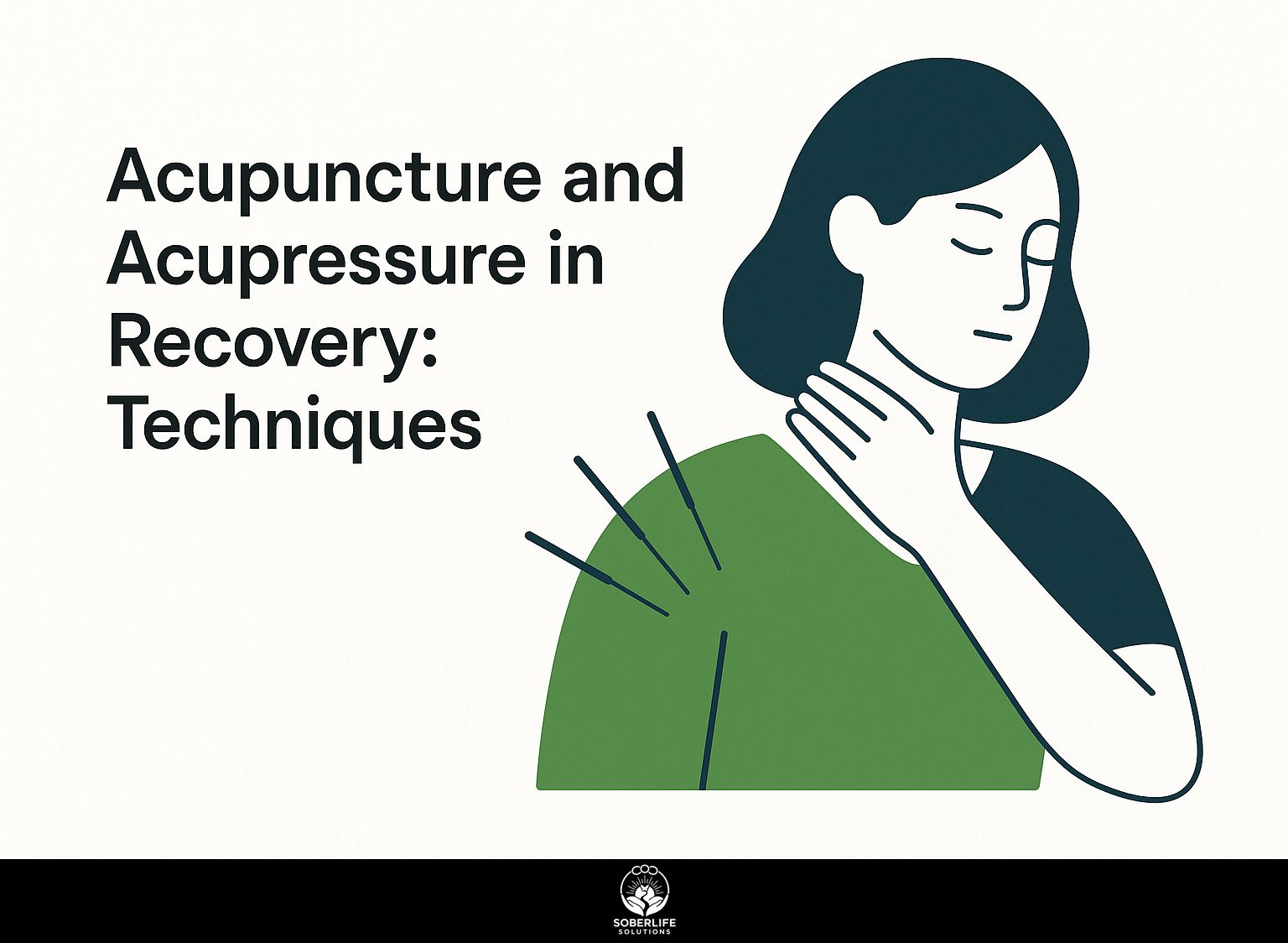
Recovery can benefit from acupuncture and acupressure, effective techniques from traditional Chinese medicine. These Asian bodywork therapies focus on acupoints to promote healing and balance. In this article, we will look at useful methods from both practices, showing how they can help with pain relief and relaxation. Learn how adding these old practices to your recovery plan can improve your health and help you get better faster.
Key Takeaways:
Definition and Overview
Acupuncture involves inserting needles into specific meridians to stimulate the flow of qi, while acupressure applies pressure to the same points to achieve therapeutic effects.
Both methods try to bring balance back and support healing by concentrating on energy routes in the body.
Acupuncture is often used to treat long-lasting pain, headaches, and stress, while acupressure can help with anxiety and stomach problems. According to Johns Hopkins Medicine, these treatments can effectively manage such conditions by targeting specific energy pathways.
Practitioners can become more effective by using tools like essential oils to help relax or guided imagery techniques to help patients imagine recovery.
Regular sessions, usually once a week for a month, can improve results in either approach.
Historical Context
Acupuncture and acupressure began over 2,500 years ago as part of traditional Chinese medicine, drawing from ancient healing methods.
Acupuncture was documented in texts such as the Huangdi Neijing (The Yellow Emperor’s Classic of Internal Medicine), which laid the foundation for its practice. At the same time, acupressure became a simple method where people can use their fingers to press specific points, making it suitable for self-care.
Important events include the introduction of needle sterilization in the 20th century, which improved safety and effectiveness. These methods became widely used around the world, especially in Western countries, where they are known for reducing stress and managing pain.
Their cultural importance remains, representing complete health methods in modern therapy. As recent publications from Britannica highlight, traditional Chinese medicine continues to evolve and maintain its significance in contemporary practices, offering holistic approaches to wellness around the globe. For a deeper understanding, you can explore their detailed description of traditional Chinese medicine.
Benefits of Acupuncture in Recovery
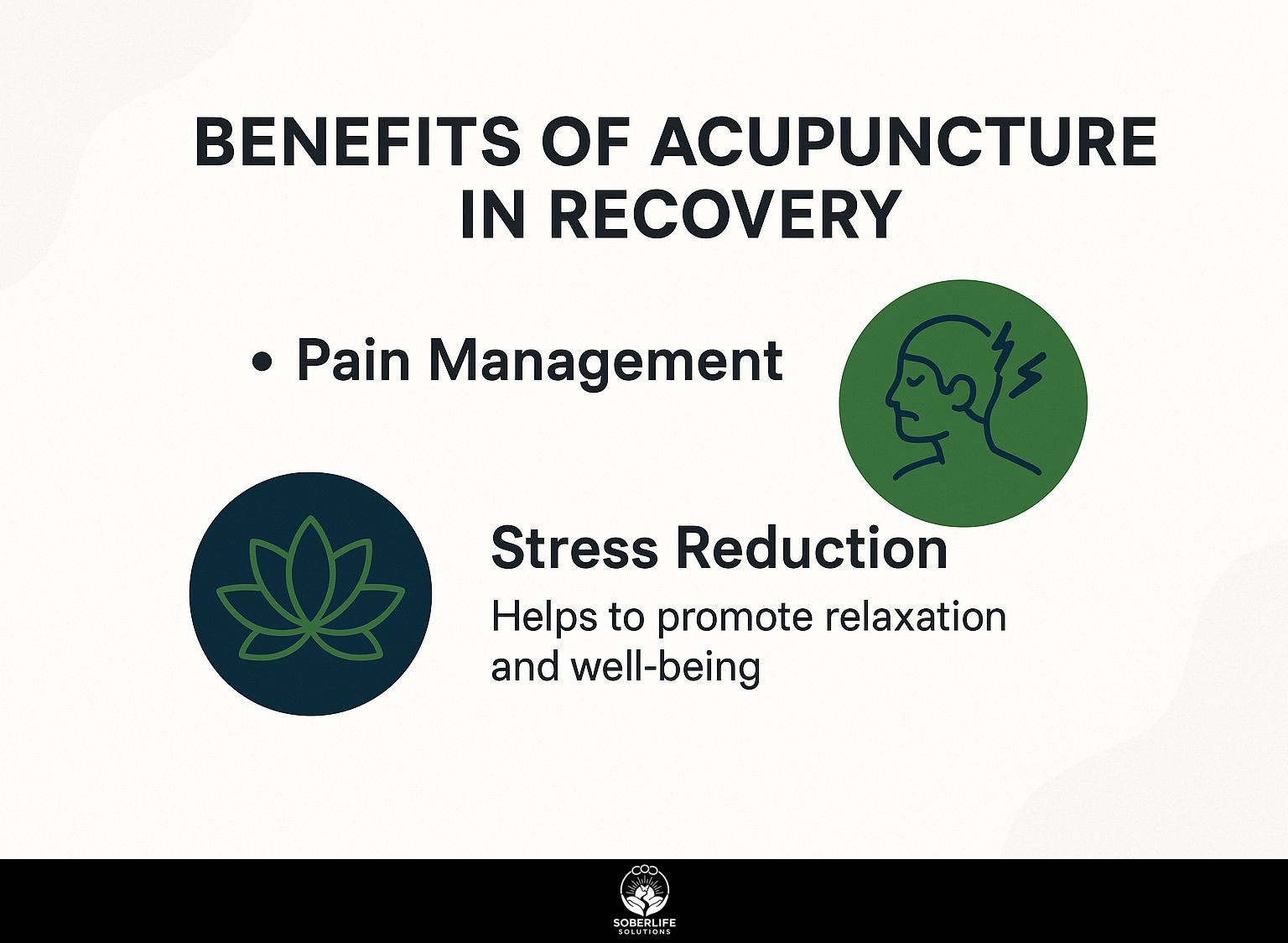
Acupuncture is important in healing, providing many health benefits that help with pain control and reducing stress, as discussed in the broader context of holistic therapy in rehab.
Pain Management
Research shows that acupuncture can reduce chronic pain by 50%, effectively stimulating the release of endorphins and modulating pain pathways.
In a study published in the Journal of Pain, patients with conditions like lower back pain and osteoarthritis reported significant relief after sessions, often within just a few treatments.
For instance, a case involving a 45-year-old man with chronic knee pain showed marked improvement after attending a series of weekly sessions for six weeks.
Tools like acupuncture point maps and specialized needles can improve treatment accuracy and effectiveness. Using these methods with the help of a licensed acupuncturist can improve results, providing personalized care for each person’s pain management needs. As noted in research by the American Academy of Family Physicians, acupuncture has been validated as an effective method for managing chronic pain conditions, enhancing the credibility of its application in clinical settings.
Stress Reduction
Acupuncture can lower stress levels by 30%, proving useful for anxiety and emotional problems.
Many case studies show that acupuncture can improve mental health. For instance, a 2018 study revealed that participants experienced significant reductions in anxiety after eight weeks of weekly sessions.
A lot of people found that including acupuncture in their health habits lowered stress, helped them sleep better, and made them feel happier.
Tools such as the AcuGraph-a digital tool for practitioners-can help track patient progress. If you’re thinking about this treatment, talk to a certified acupuncturist to go over a treatment plan specific to your stress symptoms.
Benefits of Acupressure in Recovery
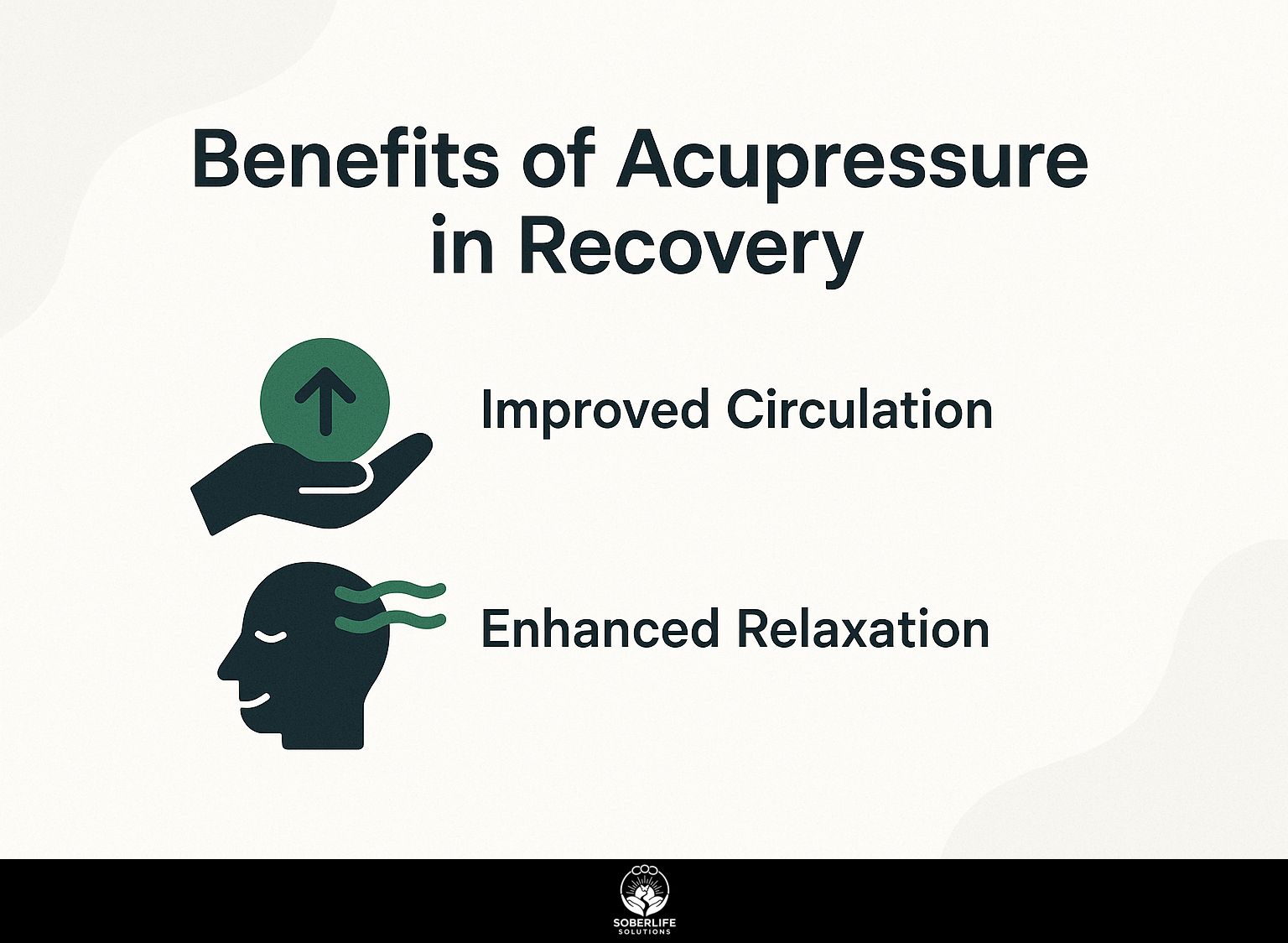
Acupressure, a gentle method, helps recovery by improving blood flow and relaxation, aiding different health problems.
Improved Circulation
Pressing on acupoints can improve blood flow by 40%, promoting better health and aiding in the body’s healing process.
This increase in blood flow can be particularly beneficial for conditions such as arthritis, muscle tension, and even post-surgical recovery.
For instance, targeting the LI4 acupoint, located between the thumb and index finger, can help alleviate pain and improve circulation in the hands and arms.
To make the treatment more effective, practitioners can use acupressure mats or roller balls together with acupressure. These tools apply steady pressure on different points, making the treatment both useful and simple to use daily.
Enhanced Relaxation
Acupressure techniques promote relaxation by reducing muscle tension and anxiety, leading to improved mental clarity and comfort.
Research indicates that acupressure assists the body in calming down, reduces stress hormones, and lowers heart rate. For instance, using acupressure points like PC6, located on the inner wrist, can effectively alleviate feelings of nausea and anxiety.
Practitioners often recommend regularly applying gentle pressure to key points for 1-2 minutes. Using tools like acupressure mats and balls can improve this activity, helping you include it in your daily routine.
Applying these methods in everyday situations, like before giving a speech or taking tests, can help you remain relaxed.
Techniques of Acupuncture
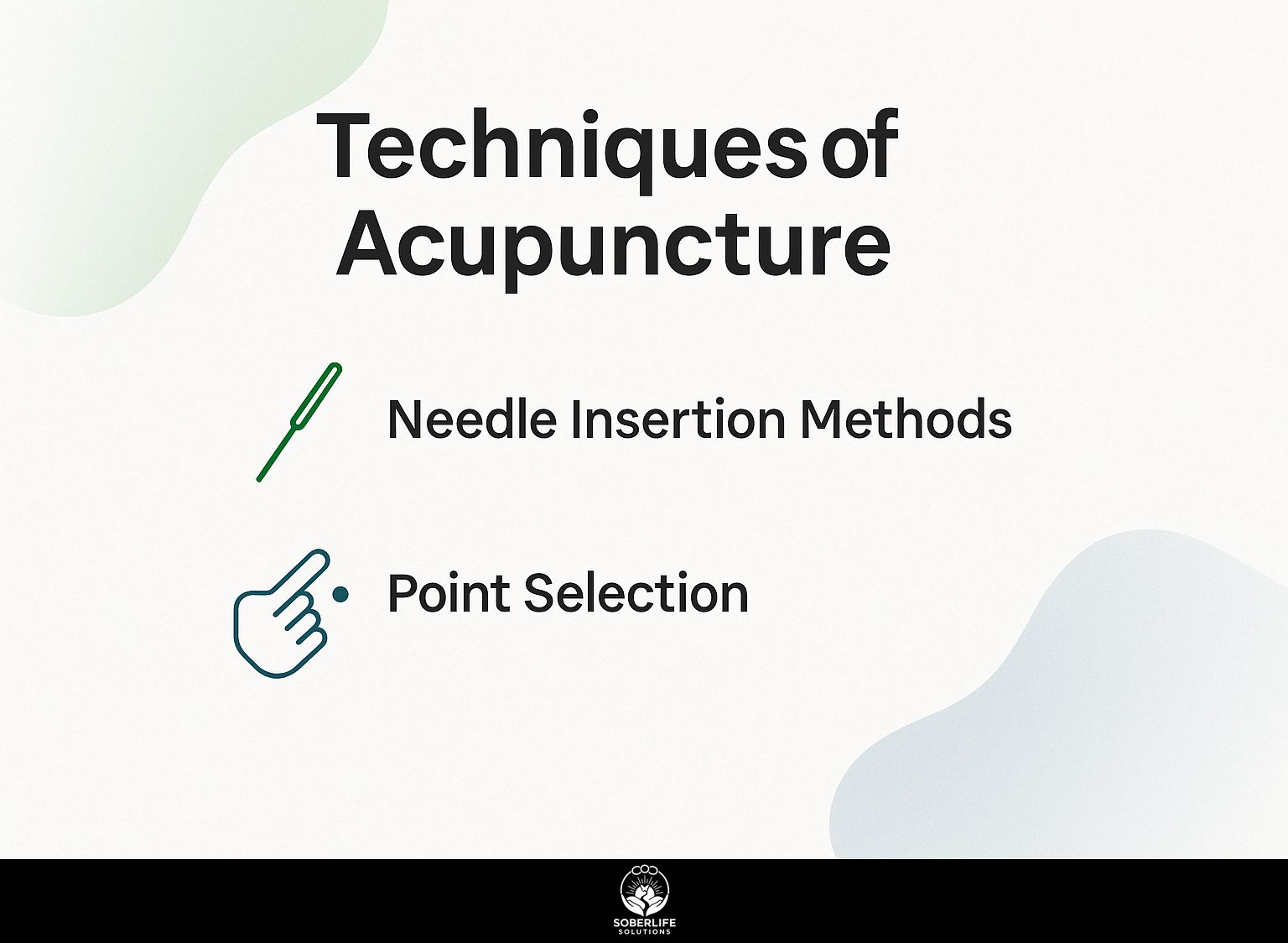
Knowing how to insert needles and choose the right points is important for successful acupuncture treatments.
Needle Insertion Methods
Practitioners use different ways to insert needles, such as inserting them slightly or more deeply, based on the treatment goals.
Shallow insertion, typically less than 0.5 cm, is often used for conditions like stress or anxiety, as it stimulates the skin and surface tissues without intense discomfort.
Inserting needles deeper, up to several centimeters, is more effective for accessing deeper muscle layers or particular areas connected to chronic pain.
For instance, a practitioner may choose shallow insertion for relaxation, while using deep insertion for conditions like sciatica.
Each technique is adjusted based on the patient’s sensitivity and the treatment objectives.
Point Selection
Choosing the right acupuncture points is critical, as specific points correspond to various health benefits across the body’s meridians.
To choose acupuncture points, practitioners look at the specific needs of each patient by evaluating physical symptoms and emotional well-being.
For example, a practitioner might select LI4 (Hegu) to ease headaches and reduce stress, while ST36 (Zusanli) could be used to improve digestion and increase energy. By tailoring point selection to each patient’s condition, the treatment becomes more effective.
Checking the pulse or tongue can improve accuracy, providing a clear plan that improves health results.
Techniques of Acupressure
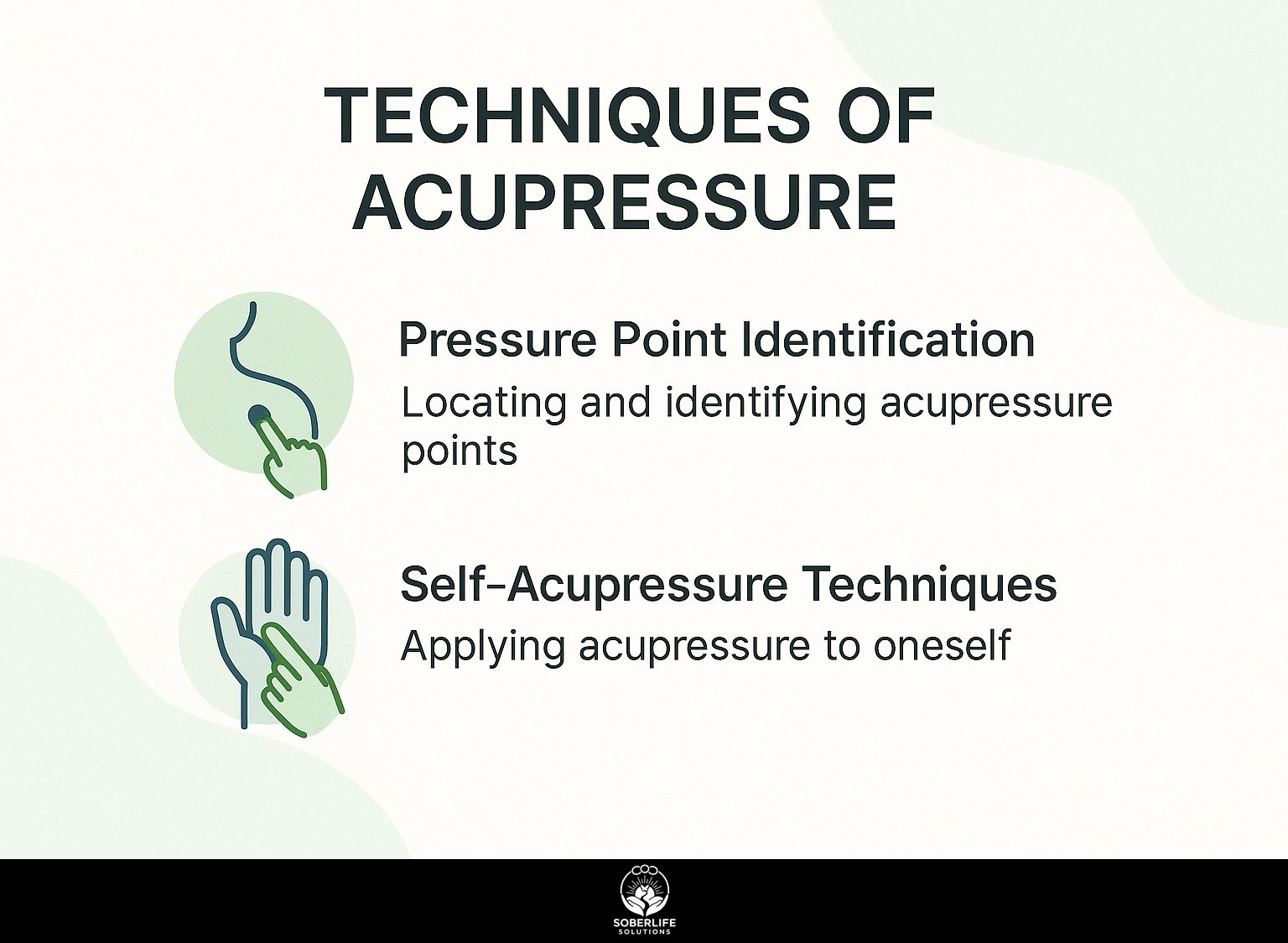
Learning acupressure skills, like finding pressure points and practicing self-acupressure, helps people take control of their health.
Pressure Point Identification
Finding important pressure spots like LI4 and PC6 is essential for effective acupressure techniques that focus on reducing pain and stress.
To locate LI4, place your thumb on the highest point of the muscle between your index finger and thumb, applying pressure for about 30 seconds.
For PC6, find the point approximately three fingerbreadths above the wrist crease on the inner forearm, between the two tendons.
Visual aids can make things clearer; online resources often have diagrams that show these places. Including acupressure in your routine might lower headaches and anxiety, making it a helpful self-care method.
Regular practice can lead to lasting relief and improved wellbeing.
Self-Acupressure Techniques
Self-acupressure techniques, such as using acupressure bands, can be easily integrated into daily routines for stress relief and wellness promotion.
One effective method is to target specific acupressure points. For example, pressing on the LI4 point, located between the thumb and index finger, can relieve headaches and stress.
To improve results, try using a massage ball or your fingertips to press down firmly for 5-10 seconds. The P6 point, found on the inner forearm about three finger-widths from the wrist, is excellent for nausea relief-especially during travel.
Performing these techniques for a few minutes each day can significantly improve your overall wellbeing.
Integrating Acupuncture and Acupressure in Recovery Plans
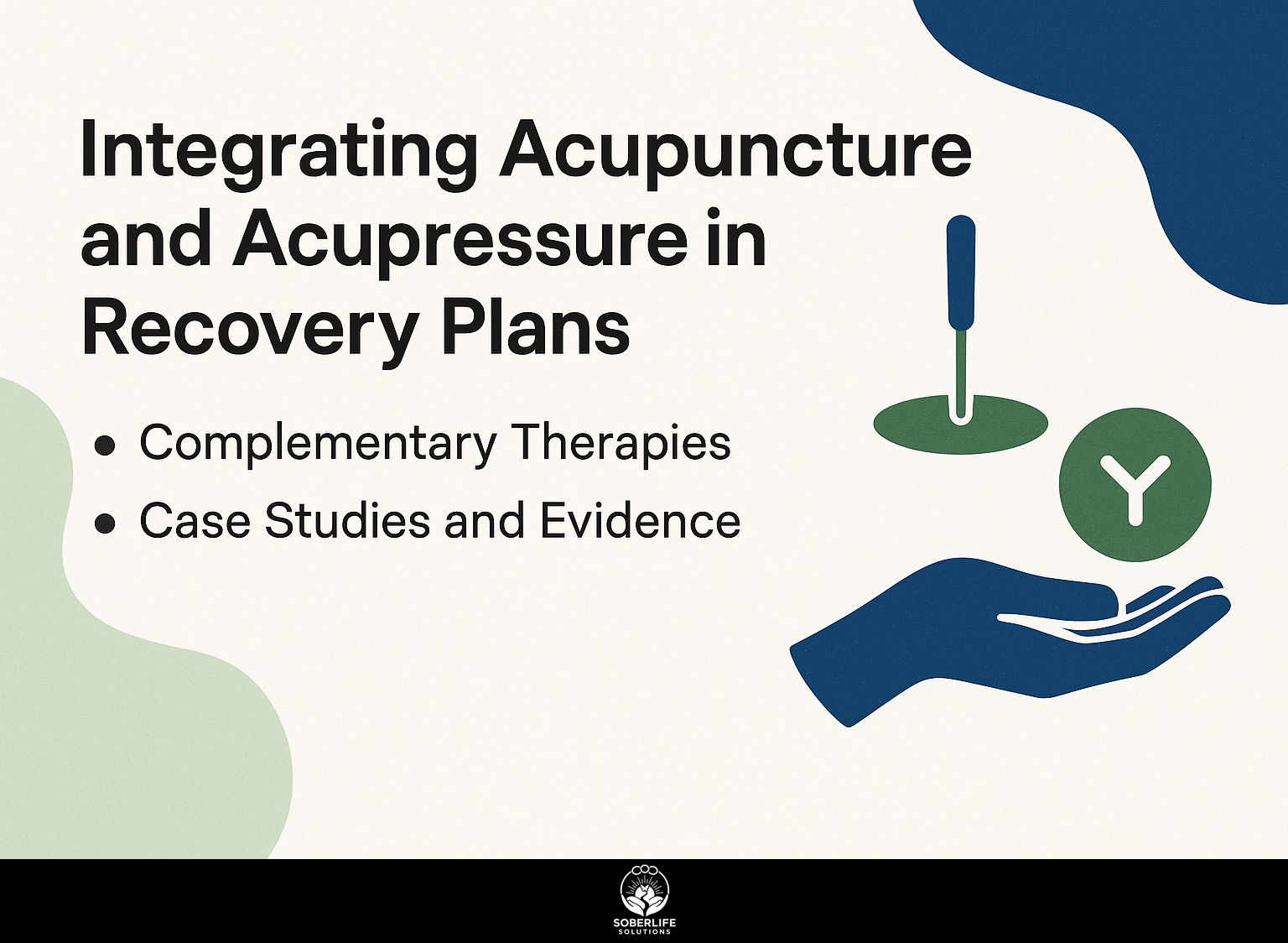
Using both acupuncture and acupressure in recovery plans provides a complete way to handle health issues and improve general well-being. For those interested in a more comprehensive understanding of how these therapies fit within a broader recovery strategy, see also: Integrative Therapies in Addiction Recovery: Benefits and Methods.
Complementary Therapies
Combining therapies such as medical qigong with acupuncture and acupressure can greatly improve recovery results.
For instance, a patient recovering from chronic pain might find that acupuncture helps relieve tension, while medical qigong promotes energy flow and emotional balance.
Incorporating regular acupressure sessions can further alleviate stress and facilitate muscle relaxation. Practitioners can collaborate by developing a treatment plan that includes these modalities, scheduling sessions to align with the patient’s recovery timeline.
Online appointment schedulers make it easy to set up therapy sessions, allowing patients to get the care they need.
Case Studies and Evidence
Recent case studies have demonstrated the effectiveness of acupuncture and acupressure in treating various health issues, from chronic pain to anxiety.
For example, a 2021 study involving 50 patients with chronic lower back pain showed that those who received a combination of acupuncture and acupressure reported a 70% reduction in pain intensity compared to a 30% reduction for those who received only one treatment.
Many patients shared testimonials highlighting improved sleep quality and reduced anxiety.
Tools such as the Acupuncture Needle (for acupuncture) and self-massage techniques (for acupressure) are recommended to maximize outcomes. These combined methods help reduce symptoms and improve general health.
Frequently Asked Questions
1. What is the difference between acupuncture and acupressure?
Acupuncture and acupressure are both techniques used in traditional Chinese medicine. Acupuncture involves inserting thin needles into specific points on the body, while acupressure involves applying pressure to these points with the fingers or hands.
2. How can acupuncture and acupressure help in recovery?
Acupuncture and acupressure can help in recovery by promoting relaxation, reducing stress and anxiety, and alleviating physical symptoms such as pain and nausea. These techniques can also help balance the body’s energy and improve overall well-being.
3. Are there any risks or side effects associated with acupuncture and acupressure in recovery?
When done by a trained and licensed practitioner, acupuncture and acupressure are generally safe and have minimal side effects. However, some people might feel slight pain, get bruises, or feel lightheaded after a session.
4. How often should I receive acupuncture or acupressure treatments in recovery?
The frequency of treatments will vary depending on the individual’s needs and condition. Typically, acupuncture and acupressure are suggested to be done once or twice a week for several weeks, and then less often as improvement occurs.
5. Can acupuncture and acupressure be used as a standalone treatment for recovery?
No, acupuncture and acupressure should be used as complementary therapies in recovery. They can be used in conjunction with other treatments such as therapy, medication, and support groups to help achieve and maintain sobriety.
6. Is it necessary to believe in the concept of energy flow for acupuncture and acupressure to work in recovery?
No, you do not need to believe in the concept of energy flow for acupuncture and acupressure to be effective. The benefits of these techniques have been supported by scientific research, and they can be used as alternative methods for reducing stress and promoting relaxation in recovery.


